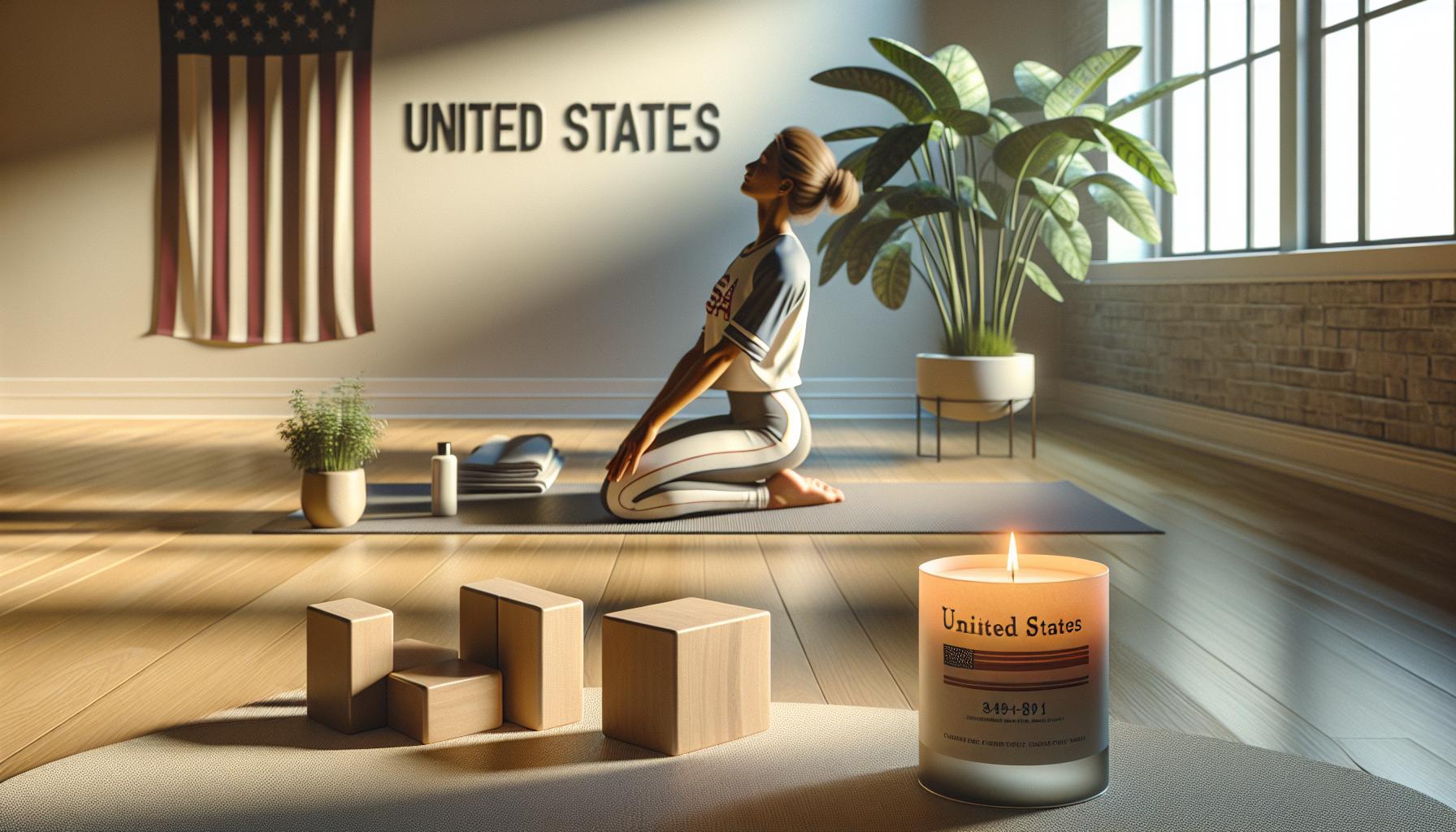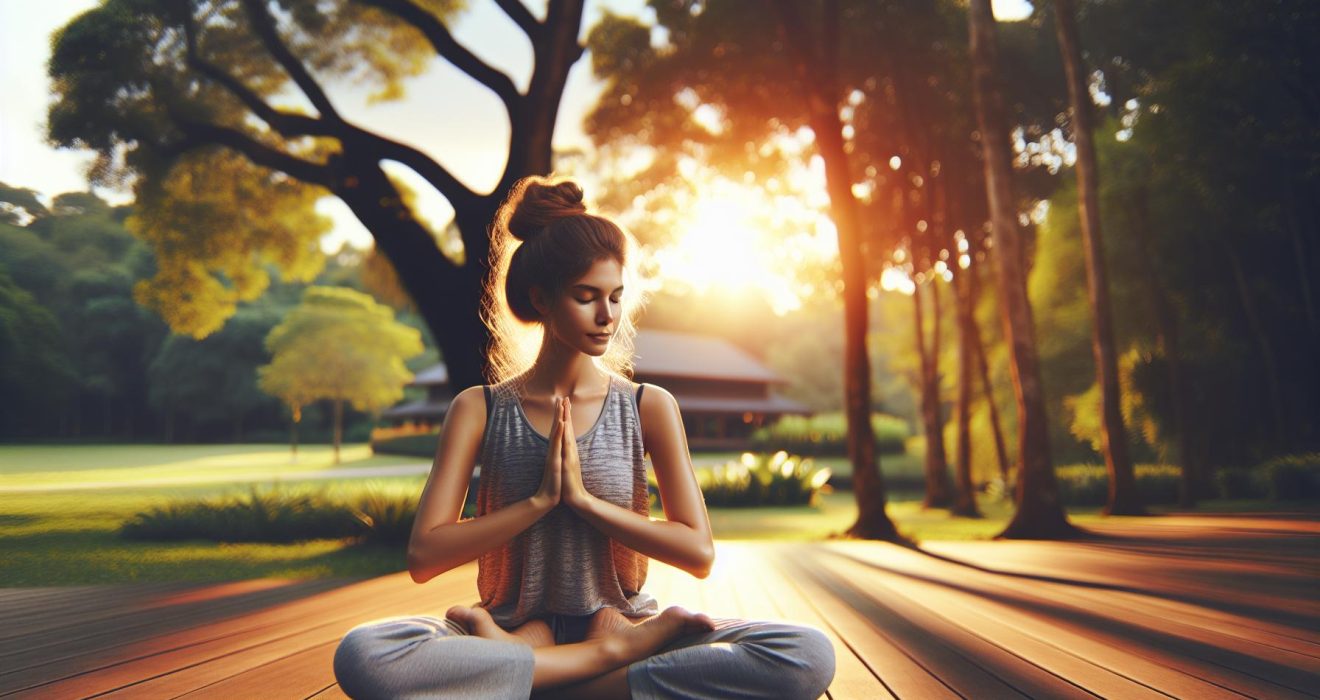Unlock Stress Relief: Simple Yoga Techniques for Daily Relaxation
Imagine settling into your cozy armchair after a long day, the kind of day that leaves your shoulders tense and your mind buzzing. That’s when I discovered something wonderfully soothing: yoga for stress relief and relaxation. It’s like unwrapping a secret recipe that melts away stress, one breath at a time. As I ventured into this gentle world of stretches and calm breaths, I found each pose to be a step towards tranquility—almost like sipping a warm cup of tea by the fireside, each sip bringing more warmth and peace. Join me as we explore how simple yoga routines can be your next great adventure in relaxation, turning those overwhelming days into moments of peace and recovery. Let’s breathe deep and unravel the serenity together, shall we?
The Benefits of Yoga for Stress Relief
After exploring the soothing embrace of yoga in my initial journey, I’ve discovered some fascinating insights that highlight the profound connection between yoga and stress relief.
Understanding the Connection Between Yoga and Relaxation
When I first rolled out my yoga mat, little did I know I was stepping into a world of calm. Yoga isn’t just about bending and twisting; it’s a holistic approach to unwind your mind as you stretch your body. The secret sauce here is the deep breathing coupled with slow, focused movements, facilitating a relaxation response in your body. This isn’t just me talking—science backs it up! Engaging in yoga activates the parasympathetic nervous system (that’s the cool, calm and collected part of your nervous system), reducing your heart rate and lowering blood pressure. So, if you’re looking for an escape valve from the high pressures of daily life, yoga could be your best buddy.
Top Benefits of Regular Yoga Practice
Diving deeper into yoga has shown me there’s a lot more than just feeling good during the sessions. Here’s how sticking with it pays off:
- Boosts Mood: Every time I step off the mat, I feel like I’ve hit the reset button. It’s like every yoga session is a mini vacation from stress. This mood lift isn’t just in my head; yoga increases serotonin levels, which plays a key role in alleviating depression and anxiety.
- Enhances Sleep Quality: Ever since yoga became a regular part of my evening routine, countingsheep has turned into a thing of the past. Yoga helps in winding down and setting the stage for a good night’s sleep.
- Improves Focus and Concentration: Yoga sessions are my antidote for those squirrel brain days. The focused breathing and meditation sharpen my mind, making it easier to keep track of my tasks and deadlines.
- Increases Flexibility and Balance: Initially, I felt like a stiff board trying to bend. But over time, yoga not only helped me touch my toes without groaning but also improved my balance, which is a win as I’m quite clumsy!
Regular yoga practice embodies a special kind of magic that not only relaxes but transforms your overall well-being. And the best part? It’s something you can start no matter your age or fitness level. So why not unroll that yoga mat and give it a go?
Key Yoga Poses for Stress Relief

Let’s dive right into the yoga poses that melt stress away like ice cream on a sunny day. Whether you’re just starting or you’re the yogi who can twist like a pretzel, these poses are your tickets to tranquility town.
Easy Poses for Beginners
Starting your yoga journey doesn’t need to be intimidating. Here are some simple yet effective poses that anyone can try:
- Child’s Pose (Balasana): This pose is a mini vacation for your mind. Kneel on the mat, stretch your hands forward, and let your forehead touch the ground. It’s perfect for a mental reset.
- Cat-Cow Stretch (Marjaryasana and Bitilasana): Feel the rhythm of your breath with this pose. On all fours, alternate between arching your back towards the ceiling and dipping it towards the floor. It’s like giving your spine a gentle wake-up call.
- Legs-Up-the-Wall Pose (Viparita Karani): If you’ve ever wanted to kick up your feet and relax, this pose takes it literally. Sit close to a wall, lie back, and let your legs rest up against the wall. Great for calming the nervous system and improving circulation.
- Seated Forward Bend (Paschimottanasana): Stretch your stress away. Sit with your legs extended, inhale deeply, and fold forward from your hips as you exhale. Don’t worry about touching your toes—it’s about feeling the stretch in your back.
Advanced Poses for More Experienced Practitioners
For those who have been doing yoga for a while, these poses might add that extra layer of challenge and relaxation:
- Headstand (Sirsasana): Turn your world upside-down! This pose isn’t just cool to look at, it also invigorates your brain by reversing the blood flow.
- Crow Pose (Bakasana): Balance on your hands while tucked into a tight little ball. It sounds tough, and it is, but it’s also thrilling to master. Plus, it builds incredible core strength.
- Wheel Pose (Urdhva Dhanurasana): Open your heart and stretch out your whole front body. Lie on your back, place your hands by your ears, and push up. Hello, spine flexibility!
- King Pigeon Pose (Raja Kapotasana): A deep hip opener that also challenges your balance and flexibility. From a lunge position, bring your back foot towards your head, and stretch your arms back to hold your foot. It’s dramatic and so satisfying.
Breathing Techniques in Yoga for Enhanced Relaxation

Breathing: It’s not just that thing you do to stay alive; it’s also a transformative tool in yoga that zaps stress away and coaxes your body into a state of blissful chill. Let’s dive into why mastering the art of breathing is like finding the mute button in a noisy world.
The Importance of Breath Control
Controlling your breath is a game changer in managing stress. When you breathe deeply, you signal your brain to chill out and tell your body it’s time to unwind. This isn’t magic—it’s biology! Engaging in controlled breathing exercises activates your parasympathetic nervous system, which in layman’s terms, helps your body to relax and slow down. This means a slower heart rate, reduced blood pressure, and a sensation of peace that might have seemed out of reach when your mind was racing a mile a minute. So, think of breath control as your personal off-switch for stress.
Simple Breathing Exercises to Try
Let’s put theory into practice with some easy breathing exercises that you can do almost anywhere, anytime. First up, we’ve got the “4-7-8” breathing. It’s simple: breathe in for 4 seconds, hold it for 7 seconds, and exhale for 8 seconds. This technique is a superstar at calming nerves before a big event or winding down before bed.
Next, there’s the “Alternate Nostril Breathing”, which sounds like a circus act but trust me, it’s a staple in yoga for good reason. Just hold one nostril closed and breathe in through the other; then switch and exhale through the first nostril. It’s like a reset button for your mental state.
Incorporating these practices into your daily routine can make a world of difference in how you handle stress and just life’s curveballs. Give them a go, and watch the magic happen, one breath at a time.
Integrating Yoga Into Your Daily Routine

Integrating yoga into your everyday life isn’t just about bending like a pretzel on a mat; it’s about creating moments of peace in the chaos of your day-to-day life. Let’s look at practical ways to welcome yoga into your daily routine to help melt away the stress.
Creating a Relaxing Space at Home
Establishing a dedicated yoga space at home transforms your practice from occasional to habitual. Here’s how I set up my own little zen zone:
- Choose a Quiet Corner: It doesn’t need to be large—a small, quiet area away from high traffic parts of your home works wonders.
- Keep It Simple: A yoga mat, maybe a couple of blocks, and your favorite scented candle? Perfect. Overcomplicating it can take away from the zen you’re trying to achieve.
- Pleasant Surroundings: A plant or two, soft lighting—or perhaps some sheer curtains to soften daylight—enhance the calmness. The right environment engages your senses, making relaxation almost inevitable.
- Sound Matters: A soft-playing playlist of nature sounds or calming music can set the stage. No blaring TVs nearby, please!
A personal nook encourages regular practice; the simpler it is, the more likely you’ll step onto that mat regularly.
Finding Time for Yoga in a Busy Schedule
Squeezing yoga into a packed day might sound like a scheduling nightmare, but here’s the scoop on how I manage:
- Rise Early: Rolling out of bed 20 minutes early gives you quiet time before the daily whirlwind begins. Morning yoga starts your day with a serene mindset.
- Lunch Break Stretch: Swap scrolling through social media for a 15-minute yoga session. It’s refreshing and can boost your productivity for the afternoon ahead.
- Child’s Pose During Child Play: When your kids are playing or settled down with a book, take a few minutes for some poses. Yes, you might get curious glances, but hey, it’s a good kind of multitasking!
- Wind Down: Instead of zoning out to the TV at night, roll out your mat. Turning to yoga before bed helps cue your body for sleep—think of it as your nighttime signal to unwind.
Conclusion
Embracing yoga as part of your daily routine can be a game changer for managing stress and enhancing relaxation. I’ve shared my journey and the impactful benefits yoga offers from improving mood to boosting overall health. Whether you’re stretching into a Child’s Pose to unwind after a hectic day or mastering breathing techniques to calm your mind the transformative power of yoga is undeniable. Remember it’s not about perfect poses but finding what feels good and helps you connect with a sense of peace. So roll out your mat create your tranquil space and let yoga work its magic in your life. Here’s to a calmer more centered you!

